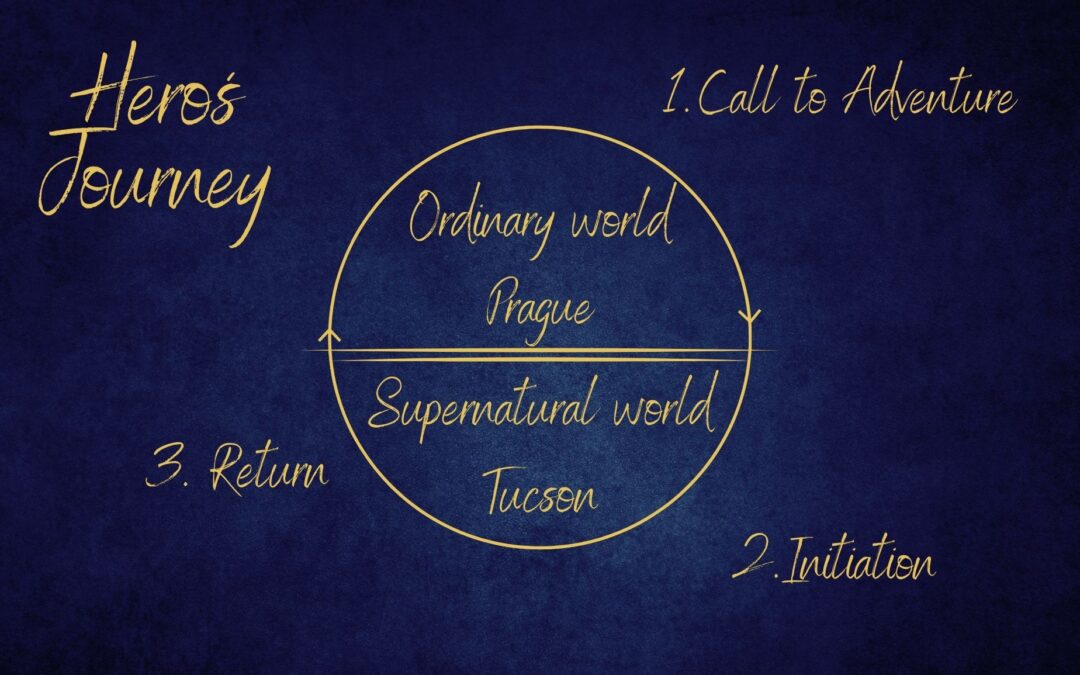Photo Credit: Aneta Hebrova
My Hero’s Journey to Tucson
As I reflect on my journey to Tucson, Arizona, I am reminded of Joseph Campbell’s profound insights into the Hero’s Journey—a narrative template that resonates deeply with my own experiences. In this article, I will share the intricacies of my personal odyssey through the lens of Campbell’s framework, drawing parallels to the archetypal stages of transformation, which can be simplified in 3 stages and insights from Jung’s emphasis on introspection, self-discovery, and the transformative power of exploring the depths of one’s psyche.
1. Call to Adventure
My journey to Tucson commenced unexpectedly, during a routine business trip. As I saw the vast expanse of the desert landscape full of cacti, bathed in the ethereal glow of dusk, I felt a stirring within me—a sense of wonder and awe unlike anything I had ever experienced. It was as if the desert itself was calling out to me, beckoning me to explore its mysteries and unlock its hidden treasures. It was very exotic, nothing I would see before.
In Campbell’s words, “A hero ventures forth from the world of common day into a region of supernatural wonder.” Tucson became my threshold to this realm of possibility, igniting a spark of curiosity and adventure within me that would forever alter the course of my life’s journey. Little did I know, this moment would mark the beginning of a profound transformation—a journey of self-discovery and personal growth that would challenge me to confront my deepest fears and embrace the unknown.
2. Initiation
After returning to Tucson, my initiation unfolded gradually, guided by encounters with locals, mentors, and unexpected allies mixed with new life challeges. Each interaction, whether with a fellow traveler or a local Tucsonan, who taught me something about this place, offered lessons and insights that challenged my perceptions and expanded my understanding of the world.As Jung observed, “The meeting of two personalities is like the contact of two chemical substances: if there is any reaction, both are transformed.” Indeed, my interactions in Tucson catalyzed a process of inner alchemy, prompting me to confront my fears, insecurities, and preconceptions head-on. This stage was full of synchronicities and flow, mixed with obstacles and growth.
3. Return:
As my time in Tucson drew to a close, I found myself grappling with the prospect of returning to the ordinary world. It was very hard, and I did not want to come back from the supernatural world. In Campbell’s words, “The returning hero, to complete his adventure, must survive the impact of the world.” As I returned to my everyday life, I realized that my journey to Tucson had fundamentally changed me. I was no longer the same person but a transformed version of myself. This return symbolized a deeper inner journey, as I sought to align with my true nature and connect with my higher self, echoing Jung’s wisdom: “Who looks outside, dreams; who looks inside, awakes.”
Conclusion
In conclusion, my journey to Tucson epitomizes the archetypal stages of the Hero’s Journey, as elucidated by Joseph Campbell and Carl Gustav Jung. Through encounters with the unknown and new people, trials of initiation, and the transformative process of return, I embarked on a mythic quest of self-discovery and personal growth. By embracing the call to adventure and navigating the challenges of the journey, I emerged as a modern-day hero, enriched by the timeless wisdom of myth and legend. As I continue to navigate life’s complexities, I carry with me the lessons learned and the insights gained from my time in Tucson, grateful for the transformative power of the hero’s quest for meaning and self-actualization, which is ultimate purpose of life.

